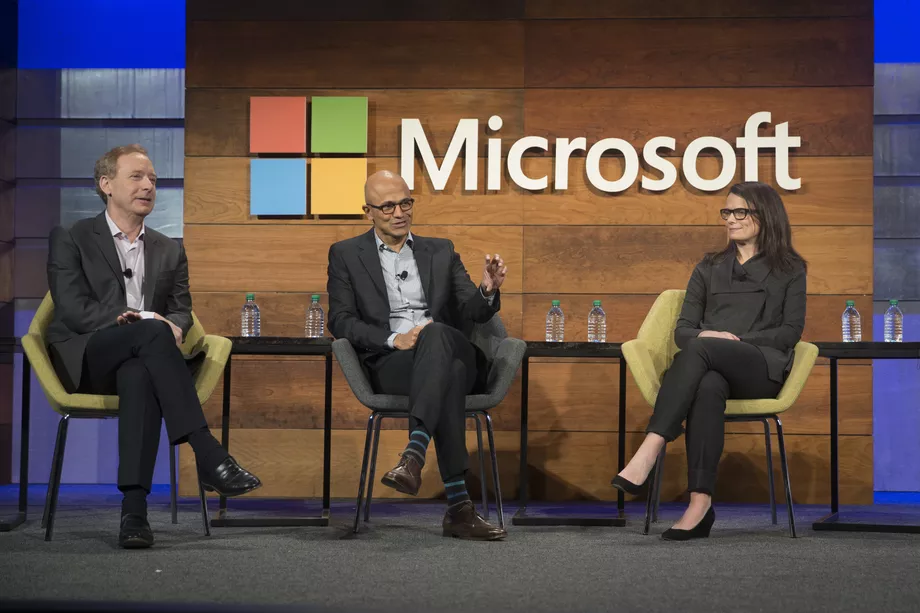Photo by Stephen Brashear/Getty Images
Microsoft plans to announce on Tuesday a new campaign to try to “eliminate” the gap in high-speed internet access in the country’s hardest-to-reach areas — an effort called the Rural Airband Initiative, which will set an ambitious target of bringing better broadband to two million Americans within the next five years.
The Redmond, Wash.-based software giant plans to start its efforts in 12 states, offering seed money — Microsoft wouldn’t specify the amount — to local telecom providers that are trying to improve internet access through means like “white spaces,” which are the invisible, wireless radio airwaves that aren’t already owned by broadcasters.
From Microsoft’s point of view, this approach — aimed at delivering speedy wireless internet — is the best way to improve connectivity in parts of the country that broadband providers long have ignored, given the prohibitive costs of building and sustaining networks there. By Microsoft’s count, more than 23 million Americans in rural areas currently lack high-speed internet access, despite billions of dollars in federal investment.
But the company emphasized that it is not looking to become a telecom provider — it’s only providing capital to local firms — and does not seek to profit from the endeavor. Through revenue-sharing agreements, Microsoft instead plans to invest any money it raises in additional projects in other states where internet access is lacking.
Microsoft president Brad Smith is slated to unveil the project during a speech in Washington, D.C., later on Tuesday. He declined to be interviewed for this story.
Microsoft faces a daunting task in bridging the country’s digital divide.
For one thing, these “white spaces” aren’t available in every market in the United States. Rather, Microsoft wants the Federal Communications Commission to reserve more of that spectrum for unlicensed use in the coming months. But the idea has been met with stiff opposition from broadcasters, which generally have to pay to obtain that spectrum from the U.S. government.
Nor are “white spaces” some panacea for the country’s broadband ills: Even Microsoft acknowledges in its announcement that other technologies, like internet delivered by satellite, are necessary to improve connectivity in the country’s most remote regions. At the moment, Microsoft has not announced any specific investments in that technology.
For now, the initial targets are 12 states: Arizona, Georgia, Kansas, Maine, Michigan, New York, North Dakota, South Dakota, Texas, Virginia, Washington and Wisconsin, a spokesman told Recode. In Virginia, Microsoft previously announced a partnership with a local network to provide free broadband in two communities where 50 percent of students have no internet connectivity.
Through its philanthropic organization, Microsoft also plans to work with groups like the National 4-H Council, a youth-development effort, as the tech giant tries to boost digital literacy training.
Meanwhile, Microsoft will set about lobbying in Washington, D.C., seeking the release of more “white spaces” as well as new federal investments in U.S. broadband. The tech company has specifically called for government funding on a “matching basis” with private sector dollars, a position that aligns closely with the Trump administration, where senior officials have mulled a major infrastructure package — valued at $1 trillion — that would rely heavily on public-private partnerships.
BY

